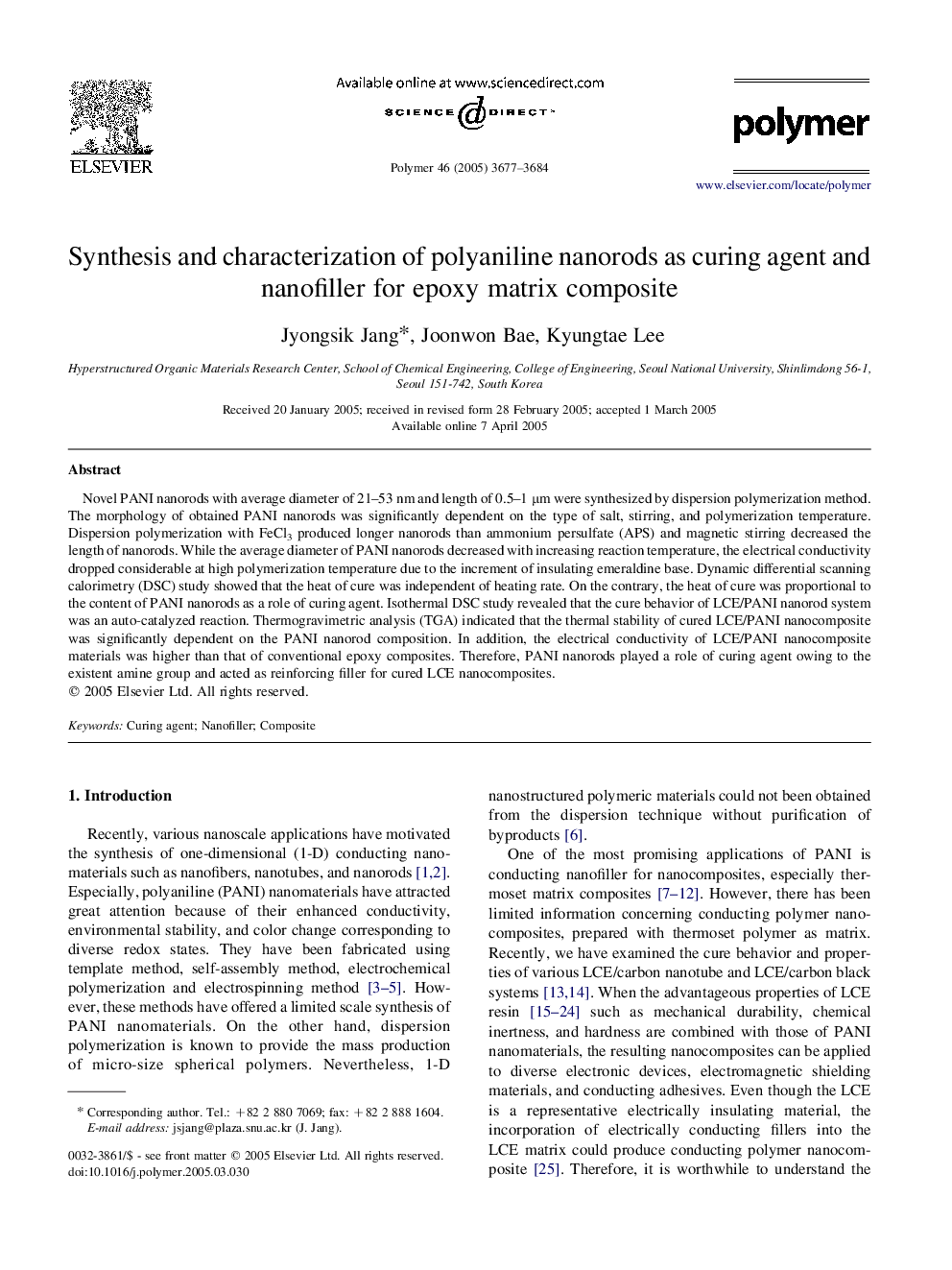| Article ID | Journal | Published Year | Pages | File Type |
|---|---|---|---|---|
| 5191319 | Polymer | 2005 | 8 Pages |
Novel PANI nanorods with average diameter of 21-53 nm and length of 0.5-1 μm were synthesized by dispersion polymerization method. The morphology of obtained PANI nanorods was significantly dependent on the type of salt, stirring, and polymerization temperature. Dispersion polymerization with FeCl3 produced longer nanorods than ammonium persulfate (APS) and magnetic stirring decreased the length of nanorods. While the average diameter of PANI nanorods decreased with increasing reaction temperature, the electrical conductivity dropped considerable at high polymerization temperature due to the increment of insulating emeraldine base. Dynamic differential scanning calorimetry (DSC) study showed that the heat of cure was independent of heating rate. On the contrary, the heat of cure was proportional to the content of PANI nanorods as a role of curing agent. Isothermal DSC study revealed that the cure behavior of LCE/PANI nanorod system was an auto-catalyzed reaction. Thermogravimetric analysis (TGA) indicated that the thermal stability of cured LCE/PANI nanocomposite was significantly dependent on the PANI nanorod composition. In addition, the electrical conductivity of LCE/PANI nanocomposite materials was higher than that of conventional epoxy composites. Therefore, PANI nanorods played a role of curing agent owing to the existent amine group and acted as reinforcing filler for cured LCE nanocomposites.
